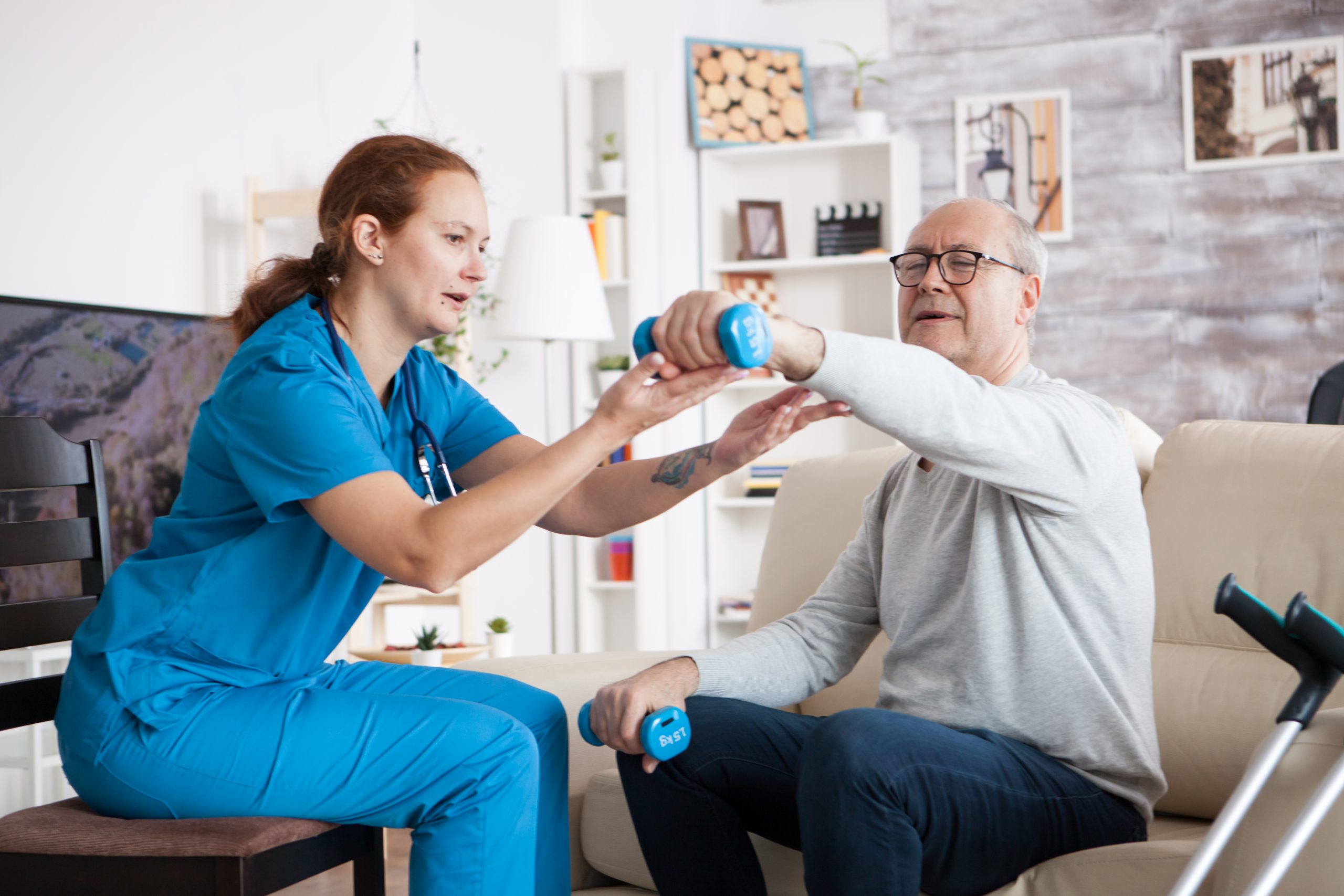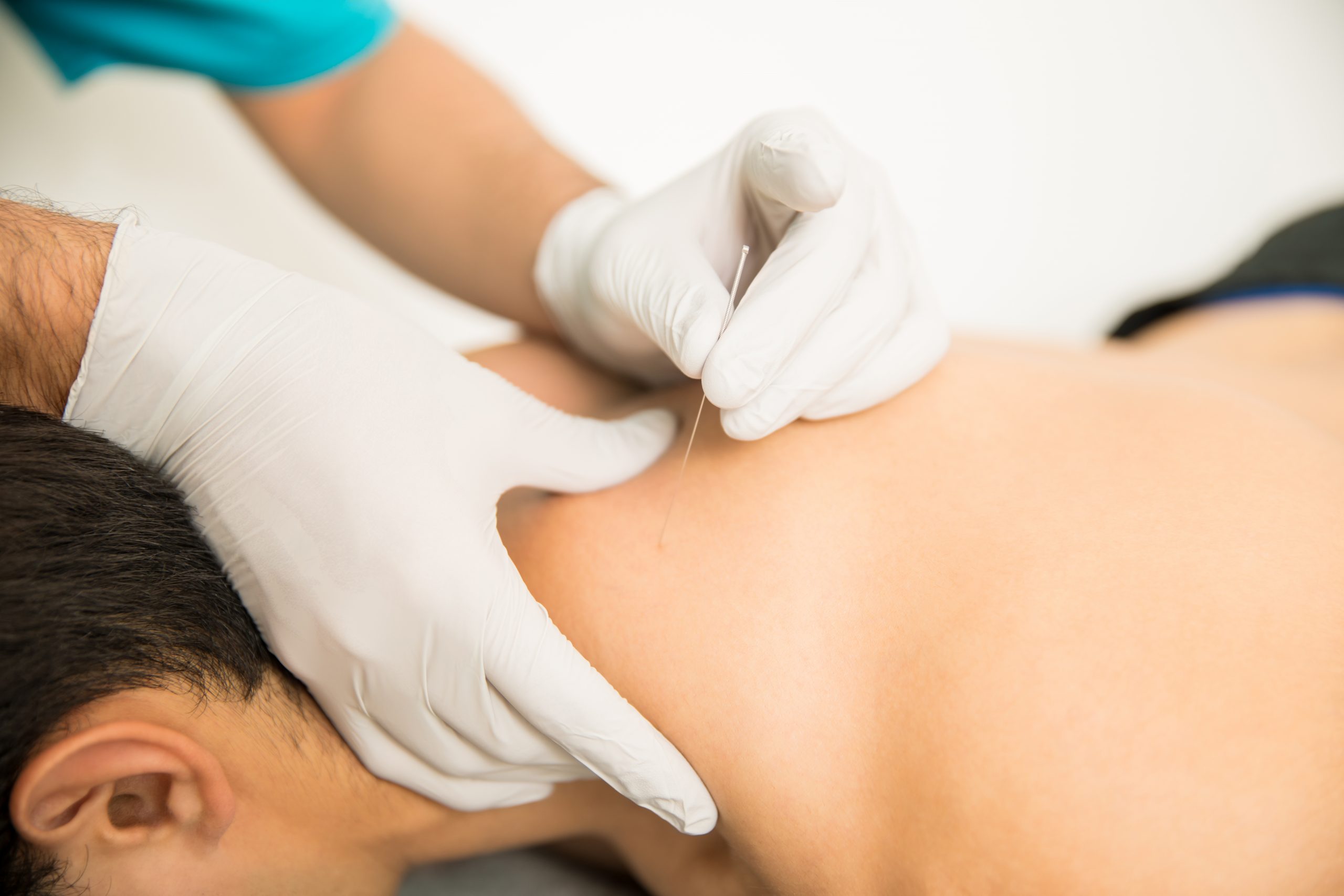Home Physiotherapy
Home physiotherapy is a service where a physiotherapist visits a patient at their home to provide treatment and rehabilitation. The treatment plan is customized according to the patient’s needs and medical history. Here are some of the things that may be included in home physiotherapy:
- Assessment of medical history, current condition, and mobility limitations
- Personalized treatment plan development
- Exercise programs for strength, flexibility, balance, and mobility
- Modalities for pain management/ electrical muscle stimulation
- Training on safe exercise performance
- Manual therapy techniques for pain relief and improved range of motion
- Assistive device recommendations for mobility
- Education on proper body mechanics and lifestyle modifications
- Continual monitoring and modification of treatment plan
Sports Rehab
Sports rehabilitation is a specialized form of physiotherapy that focuses on treating and preventing sports-related injuries. Here are some of the things that may be included in a sports rehab program:
Sports rehabilitation is designed to help athletes of all levels, from amateurs to professionals, recover from injuries and improve their performance. By working with a sports rehab professional, athletes can safely and effectively return to their sport and reduce the risk of future injuries.
- Assessment of sports injury
- Personalized treatment plan development
- Exercise programs for strength, flexibility, endurance, and sport-specific skills
- Training on proper body mechanics and technique
- Manual therapy techniques for pain relief and improved range of motion
- Modalities such as ultrasound/shockwave/TENS/IFT/electrical stimulation to enhance healing and reduce inflammation
- Sport-specific rehabilitation and training for safe return to sport
- Education on injury prevention
- Continual monitoring and modification of treatment plan
Pre & Post Surgery Rehab
Pre Surgery Rehab
- Assessment of the patient’s medical history, current condition, and mobility limitations
- Education on what to expect during and after surgery
- Exercise programs to improve strength, flexibility, and endurance before surgery
- Training on the use of assistive devices such as crutches or walkers
- Strategies to reduce swelling and inflammation
- Training on use of assistive devices
Post Surgery Rehab
- Assessment of surgical site and overall condition
- Personalized treatment plan development
- Exercise programs for strength, flexibility, and range of motion
- Manual therapy techniques to relieve pain, reduce swelling, and improve joint mobility
- Training on use of assistive devices
- Education on wound care and infection prevention
- Strategies to reduce scar tissue formation
- Continual monitoring and modification of treatment plan
Musculoskeletal Rehab
A musculoskeletal rehab program is designed for people with impairments or disabilities due to disease, disorders, or injury to the muscles, tendons, ligaments, or bones.
- Assessment of the patient’s medical history, current condition, and mobility limitations
- Development of a personalized treatment plan to address the specific condition and patient’s needs
- Exercise programs to improve strength, flexibility, range of motion and increase endurance
- Manual therapy techniques such as soft tissue release, joint mobilization, and stretching
- Training on safe exercise performance and use of assistive devices
- Modalities such as heat, ice, ultrasound, or electrotherapy for pain relief and tissue healing
- Functional training to improve activities of daily living
Neurological Rehab
Neurological rehabilitation is a specialized form of physiotherapy that focuses on the treatment of conditions related to the nervous system, including brain injuries, stroke, spinal cord injuries, multiple sclerosis, and Parkinson’s disease. Here are some of the things that may be included in a neurological rehab program:
- Comprehensive assessment of the patient’s medical history, neurological function, and mobility limitations
- Development of a personalized treatment plan to address the specific neurological condition and patient’s needs
- Exercise programs to improve strength, balance and motor control; manage spasticity and pain
- Gait and mobility training to improve walking and other functional activities
- Range of motion and stretching exercises to improve flexibility
- Training on safe transfer techniques and use of assistive devices
- Coordination and fine motor skills training
- Sensory re-education to improve tactile sensation and proprioception
- Modalities such as electrical muscle stimulation
- Continual monitoring of progress and modification of treatment plan as necessary
Chest Physiotherapy
Chest physiotherapy is a specialized form of physiotherapy that focuses on the treatment of conditions related to the respiratory disease/lung conditions/ heart diseases, including asthma, COPD, lung infection (pneumonia), bronchitis, ischemic heart disease, heart failure, myocardial infarctions coronary angioplasty or coronary artery bypass grafting. Here are some of the things that may be included in a chest physiotherapy program:
- Comprehensive assessment of the patient’s medical history and respiratory/cardiac function
- Development of a personalized treatment plan to address the specific respiratory/heart condition and patient’s needs
- Breathing exercises to improve lung function and reduce breathing difficulties
- Techniques to improve coughing and clearing of mucus from the lungs
- Airway clearance techniques to assist with secretion removal and improve oxygenation
- Chest percussion and vibration to help loosen and move mucus in the lungs
- Postural drainage to help drain secretions from specific lung segments
- Education on proper breathing techniques, coughing techniques, and use of assistive devices (such as nebulizers or inhalers)
- Continual monitoring of progress and modification of treatment plan as necessary
Dry Needling
Dry needling is a therapeutic technique that involves inserting thin needles into specific trigger points in muscles or soft tissues. It’s often used to relieve pain and improve muscle function.
Discover relief from muscle pain and dysfunction with our Trigger Point Dry Needling service, which involves:
- Small Filament-Type Needles: We use specialized, small filament-type needles to precisely target and release tight muscles, reducing pain and dysfunction.
- Deactivation of Trigger Points: Dry needling deactivates and reduces the sensitivity of myofascial trigger points, providing lasting relief and improved muscle function.
- Stimulation of Healing Response: By stimulating a healing response in the affected tissue, dry needling promotes natural recovery and enhances overall muscle health.
- Reduction of Biomechanical Stress: Our approach aims to reduce biomechanical stress on treated muscles, improving their function and reducing discomfort.
- Treatment for Myofascial Pain Syndrome: Whether your myofascial pain syndrome is acute or chronic, regional or generalized, our skilled practitioners can help address the underlying causes and provide effective relief.
- Targeting Trigger Points: Trigger points, which are painful spots in muscles or fascia unrelated to injury or inflammation, are expertly targeted during dry needling sessions to alleviate discomfort and tension.
Scoliosis Rehabilitation
Scoliosis rehabilitation is a specialized service aimed at managing and treating spinal curvature conditions through customized exercise and therapeutic techniques. At physio centre, we utilize SEAS (Scientific Exercise Approach to Scoliosis) and Scolio-Pilates methods to create individualized treatment plans based on the patient’s specific needs and medical history. Our scoliosis rehabilitation program may include:
- Comprehensive assessment of medical history, spinal curvature, and functional limitations.
- Development of a personalized exercise regimen to promote spinal alignment and muscle balance.
- Targeted exercises to enhance strength, flexibility, core stability, and posture.
- Pain management techniques and modalities, such as manual therapy and specialized equipment.
- Guidance on safe and effective exercise execution.
- Education on proper body mechanics, ergonomics, and lifestyle adjustments
- Ongoing evaluation and adjustment of the treatment plan to ensure optimal outcomes








